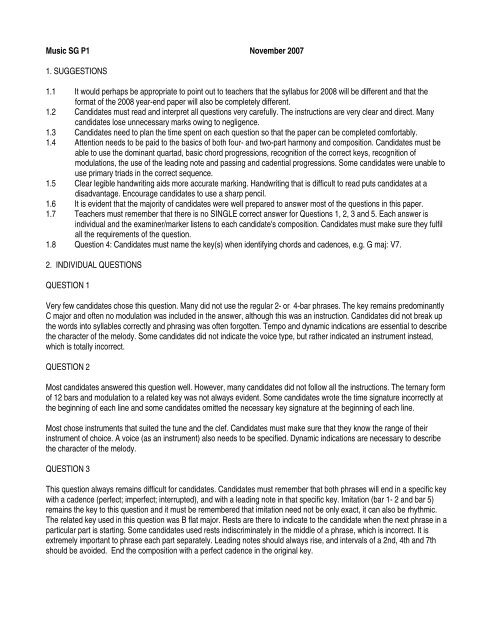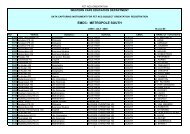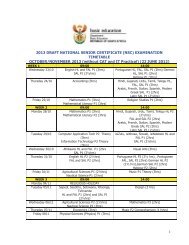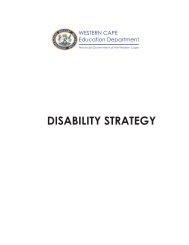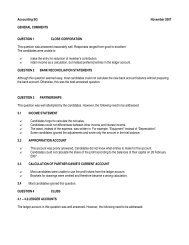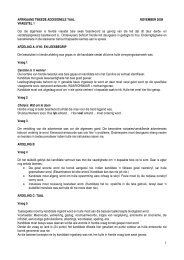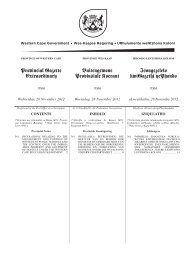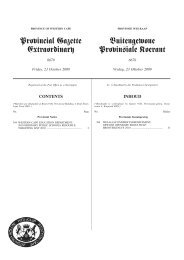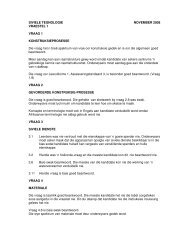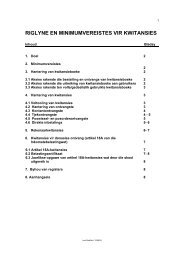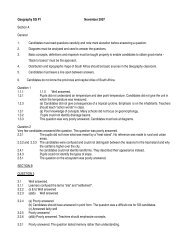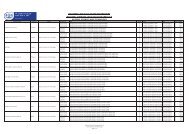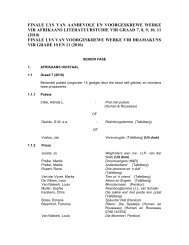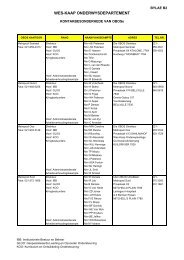Music SG P1 November 2007 1. SUGGESTIONS 1.1 It would ...
Music SG P1 November 2007 1. SUGGESTIONS 1.1 It would ...
Music SG P1 November 2007 1. SUGGESTIONS 1.1 It would ...
You also want an ePaper? Increase the reach of your titles
YUMPU automatically turns print PDFs into web optimized ePapers that Google loves.
<strong>Music</strong> <strong>SG</strong> <strong>P1</strong> <strong>November</strong> <strong>2007</strong><strong>1.</strong> <strong>SUGGESTIONS</strong><strong>1.</strong>1 <strong>It</strong> <strong>would</strong> perhaps be appropriate to point out to teachers that the syllabus for 2008 will be different and that theformat of the 2008 year-end paper will also be completely different.<strong>1.</strong>2 Candidates must read and interpret all questions very carefully. The instructions are very clear and direct. Manycandidates lose unnecessary marks owing to negligence.<strong>1.</strong>3 Candidates need to plan the time spent on each question so that the paper can be completed comfortably.<strong>1.</strong>4 Attention needs to be paid to the basics of both four- and two-part harmony and composition. Candidates must beable to use the dominant quartad, basic chord progressions, recognition of the correct keys, recognition ofmodulations, the use of the leading note and passing and cadential progressions. Some candidates were unable touse primary triads in the correct sequence.<strong>1.</strong>5 Clear legible handwriting aids more accurate marking. Handwriting that is difficult to read puts candidates at adisadvantage. Encourage candidates to use a sharp pencil.<strong>1.</strong>6 <strong>It</strong> is evident that the majority of candidates were well prepared to answer most of the questions in this paper.<strong>1.</strong>7 Teachers must remember that there is no SINGLE correct answer for Questions 1, 2, 3 and 5. Each answer isindividual and the examiner/marker listens to each candidate's composition. Candidates must make sure they fulfilall the requirements of the question.<strong>1.</strong>8 Question 4: Candidates must name the key(s) when identifying chords and cadences, e.g. G maj: V7.2. INDIVIDUAL QUESTIONSQUESTION 1Very few candidates chose this question. Many did not use the regular 2- or 4-bar phrases. The key remains predominantlyC major and often no modulation was included in the answer, although this was an instruction. Candidates did not break upthe words into syllables correctly and phrasing was often forgotten. Tempo and dynamic indications are essential to describethe character of the melody. Some candidates did not indicate the voice type, but rather indicated an instrument instead,which is totally incorrect.QUESTION 2Most candidates answered this question well. However, many candidates did not follow all the instructions. The ternary formof 12 bars and modulation to a related key was not always evident. Some candidates wrote the time signature incorrectly atthe beginning of each line and some candidates omitted the necessary key signature at the beginning of each line.Most chose instruments that suited the tune and the clef. Candidates must make sure that they know the range of theirinstrument of choice. A voice (as an instrument) also needs to be specified. Dynamic indications are necessary to describethe character of the melody.QUESTION 3This question always remains difficult for candidates. Candidates must remember that both phrases will end in a specific keywith a cadence (perfect; imperfect; interrupted), and with a leading note in that specific key. Imitation (bar 1- 2 and bar 5)remains the key to this question and it must be remembered that imitation need not be only exact, it can also be rhythmic.The related key used in this question was B flat major. Rests are there to indicate to the candidate when the next phrase in aparticular part is starting. Some candidates used rests indiscriminately in the middle of a phrase, which is incorrect. <strong>It</strong> isextremely important to phrase each part separately. Leading notes should always rise, and intervals of a 2nd, 4th and 7thshould be avoided. End the composition with a perfect cadence in the original key.
QUESTION 4This is a question which, on the whole, presented no problems. Most answered this excellently and this is the question whichshould be answered first during any examination. 4.1 <strong>It</strong> is important to state the key, as well as the chord and position of thechord e.g. b minor iv second inversion 4.2 Most candidates answered (i) correctly, but confused G major and D major whennaming the cadence in (ii).4.3 Remember to describe the non-harmonic notes clearly and accurately, e.g. unaccented passing note and not justpassing note.QUESTION 5This question was answered fairly well, although candidates often did not recognise the passing and cadential progressions.The cadential progression must to be used specifically at the end of the last phrase. Very few candidates were able to usethe cadential progression correctly. The use of the dominant quartad (V7) with correct resolution needs attention. Rememberthat each phrase will end in a specific key with a suitable cadence (perfect; interrupted) and end the composition with thecadential progression using a perfect cadence. Most candidates were able to recognize the main key (A major) and themodulation to the dominant major (E major) at the end of the first phrase. No other modulation occurs in this question. Mostnon-harmonic notes are easily recognized and occur in the soprano voice. The suspension in bar 7 was mostly notrecognized. The harmonic rhythm is essentially a crochet beat harmony. Some candidates harmonised every note, includingthe quavers, which are actually non-harmonic notes. Once again, remember that leading notes must rise and that V can onlyresolve to i or VI.


